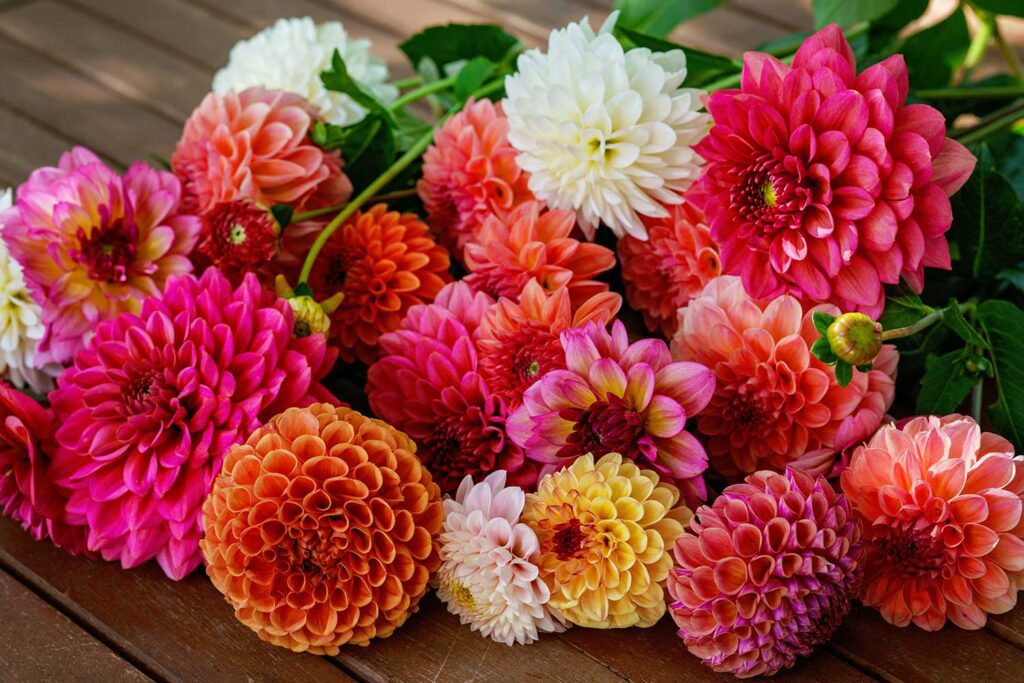In 2025, the floral industry, particularly wholesalers, distributors, and growers, is transforming how it compensates its sales teams. The old “one-size-fits-all” commission model is giving way to hybrid structures that blend salary stability with performance-driven rewards. Many companies are experimenting with new floral sales compensation models, including tiered commissions, profit-sharing, and margin-based bonuses, to better align incentives with profitability and growth. The choice between salary vs. commission compensation now depends on company size, sales role, and market conditions, making hybrid models the dominant trend across the industry.
Why Sales Compensation Matters in the Floral Industry
The floral industry operates differently from many consumer-facing sectors. Unlike retail florists, wholesalers, distributors, and growers manage long B2B sales cycles where pricing, shipping, and relationships drive margins. In this environment, floral sales compensation models are more than just payroll; they’re a strategic tool to:
- Motivate performance during peak seasonal cycles (Valentine’s, Mother’s Day, weddings).
- Retain skilled sales professionals, who are increasingly in demand across the floral supply chain.
- Align incentives with profitability, ensuring sales teams prioritize margin, not just volume.
- Provide stability for employees in markets affected by global pricing pressures and unpredictable shipping costs.
In short, compensation in 2025 is less about quick wins and more about creating sustainable growth.
Floral Sales Compensation Models in 2025
The most common floral sales compensation models shaping the floral industry this year include:
1. Salary-Only Models
Some distributors and large-scale wholesalers, especially those working on long-term supermarket or retail contracts, prefer salary-only structures.
- Advantages: Sales teams have income stability, which reduces turnover and builds trust with established accounts.
- Drawbacks: Pure salary structures may dampen motivation to seek new clients or grow beyond existing contracts.
These models work best for account management roles where the focus is on maintaining large accounts, not aggressive new business development.
2. Commission-Only Models
At the other end of the spectrum are commission-only sales jobs, still common in some operations or export-focused growers.
- Advantages: Keeps company overhead low and creates high motivation for sellers hungry to maximize earnings.
- Drawbacks: Risky for employees during off-seasons or when market conditions tighten, leading to higher turnover and not to mention allows for other companies to offer you employees better pay.
Commission-only pay is now less common in 2025, but it remains attractive to entrepreneurial sales reps who thrive on performance-driven compensation- we do not recommend it for long term growth unless done in a strategic way benefiting the employee and company.
3. Hybrid (Base + Commission) Models
The hybrid model, part salary, part commission, has become the standard in 2025 across most of the floral supply chain.
- Advantages: Provides predictable income while still rewarding growth.
- Structure Example: 70% fixed salary + 30% commission tied to revenue, order volume, or margin-based KPIs.
- Impact: Encourages sales teams to balance account management with new business development.
This model is especially popular with distributors and mid-to-large wholesalers, where stability and performance must go hand in hand.
4. Tiered Commission Structures
Many wholesalers are embracing tiered commission models. Here, salespeople earn higher commission rates after crossing certain thresholds.
- Example: 1% commission up to $500K in sales, 3% commission for $500K–$1M, and 5% commission above $1M for example- not a recommendation.
- Advantages: Encourages reps to exceed quotas and push hard during high-demand periods like Valentine’s Day and Mother’s Day.
- Impact: Creates urgency and reward alignment during seasonal spikes when margins are higher.
This structure keeps salespeople motivated year-round but especially during peak floral seasons.
5. Profit-Sharing & Margin-Based Bonuses
One of the most important shifts in 2025 is the rise of profit-sharing and margin-based incentives, particularly among distributors and large growers.
Instead of paying purely on sales volume, companies reward reps for deals that maintain strong profit margins.
- Advantages: Encourages smarter selling rather than just discount-driven volume.
- Profit-Sharing Example: Quarterly bonuses based on overall company performance, tying individual success to team results.
- Impact: Improves retention by giving sales reps a “stake” in long-term success.
This model reflects the industry’s growing need to protect margins in the face of rising shipping, energy, and labor costs.
Comparison of Sales Compensation Models in the Floral Industry (2025)
| Model | Wholesalers | Distributors | Growers |
| Salary-Only | Rare; used for back-office or admin-aligned sales roles. Provides stability but limited motivation for aggressive growth. | Common in large firms with long-term retail/supermarket contracts. Reduces risk but may cap upside. | Rare. Not well-suited to export-driven, seasonal sales cycles. |
| Commission-Only | Still found in small wholesalers. Keeps overhead low but creates instability for reps in the off-season. | Rarely used; too risky for large B2B operations. | Used in small to mid-size export farms. High upside, but can drive turnover. |
| Hybrid (Salary + Commission) | Most popular in 2025. Typically, 60–70% salary, 30–40% commission tied to volume or revenue growth. | Standard model. Salary ensures retention, while commission/bonus rewards performance on new contracts. | Emerging trend. Growers mix salary with international/export commissions for balanced incentives. |
| Tiered Commission | Increasingly common. Example: 5% up to $500K, 7% for $500K–$1M, 10% above $1M. Works well during Valentine’s/Mother’s Day peaks. | Less common but used in competitive metro markets. Helps motivate new business development reps. | Rare, but some farms offer tiered bonuses during high export seasons. |
Trends to Watch in 2025
The floral industry is undergoing a rapid transformation in its approach to sales compensation. Key trends shaping 2025 include:
- Hybrid Compensation Becomes Standard
- The majority of wholesalers and distributors now blend salary and commission.
- The majority of wholesalers and distributors now blend salary and commission.
- Margin-Based Incentives Over Volume
- Companies reward deals that maximize profit rather than just increasing order size.
- Companies reward deals that maximize profit rather than just increasing order size.
- Seasonal Bonus Programs
- Special incentive plans during Valentine’s, Mother’s Day, and holiday spikes.
- Special incentive plans during Valentine’s, Mother’s Day, and holiday spikes.
- Role-Based Compensation Differentiation
- Account managers, field reps, and business development reps all have different pay mixes.
- Account managers, field reps, and business development reps all have different pay mixes.
- Retention-Focused Models
- Salary stability and quarterly bonuses are being used to reduce turnover in a competitive job market.
- Salary stability and quarterly bonuses are being used to reduce turnover in a competitive job market.
- Export-Driven Incentives for Growers
- Higher commissions and bonuses for securing international distribution deals.
- Higher commissions and bonuses for securing international distribution deals.
FAQs
- What is the most common floral sales compensation model in 2025?
The hybrid model (salary + commission) dominates, balancing predictability with performance incentives. - How do wholesalers structure sales pay?
Wholesalers often use tiered commissions that reward higher volume sales, especially around seasonal peaks. - Why are distributors leaning toward salary-based pay?
Distributors manage large B2B contracts and prefer salary-heavy models with bonuses, reducing risk for both employees and companies. - How are growers compensating their sales teams?
Growers often use commission bonuses tied to export sales, rewarding reps for expanding international markets. - Why are profit-sharing models gaining popularity?
Profit-sharing ensures reps are rewarded for profitable growth, not just volume, aligning employee incentives with company sustainability.
Conclusion
In 2025, the floral industry is rethinking how it rewards sales performance. Companies that adopt flexible, sustainable floral sales compensation models will be best positioned to attract talent and achieve long-term growth. With rising competition, global logistics challenges, and seasonal demand spikes, companies that adopt margin-focused and retention-friendly pay models will be best positioned to attract top talent and achieve sustainable growth. Please note these are just some example based on research- we encourage you to do what is best for business and company culture- none of the content above is not a bench mark- but based on different companies opinions and practices.





